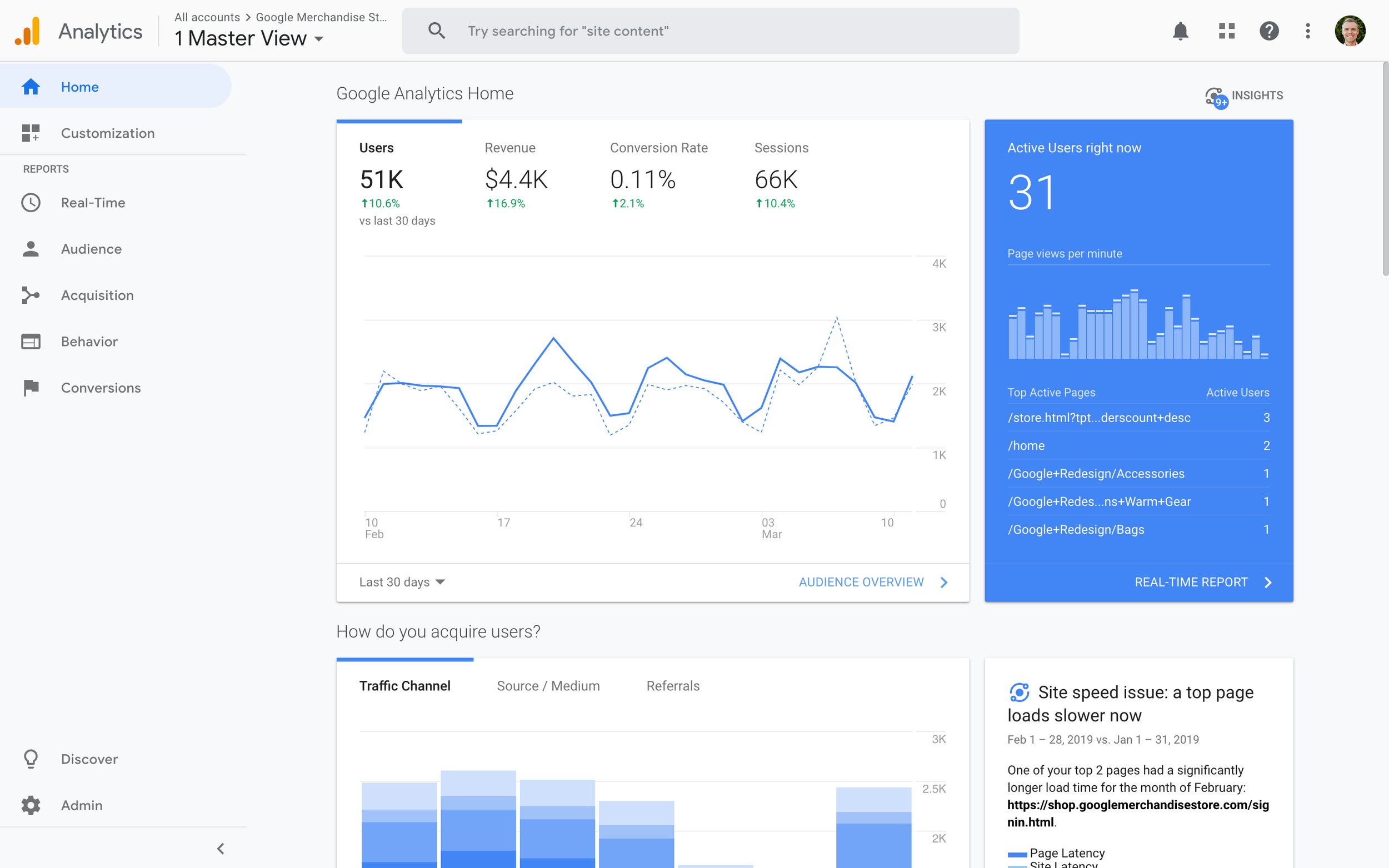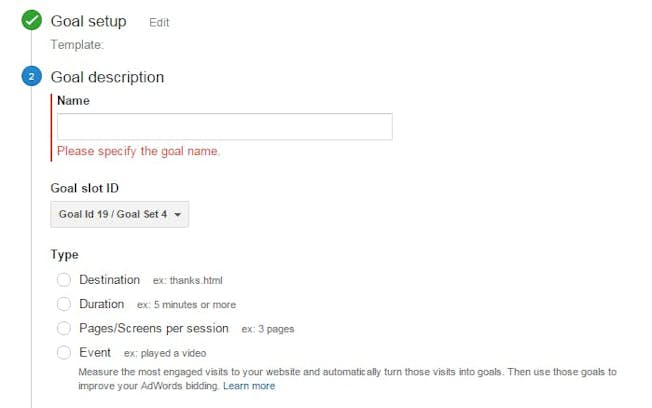What Data Is Google Analytics Goals Unable to Track: Important Information
What Data Is Google Analytics Goals Unable to Track: Important Information
Blog Article
Debunking Google Analytics Limitations: Discover What Data Goals Can not Track
In the world of electronic analytics, Google Analytics stands as a powerful tool that gives valuable understandings into site performance and user actions. From the details of individual interaction with vibrant material to the complexities of cross-device customer journeys, these limitations lost light on locations that might remain covered from traditional analytics viewpoints.

User Interaction With Dynamic Material
User communication with vibrant material plays a crucial role in comprehending individual actions on websites and enhancing the general user experience. Dynamic content refers to components on a web page that can transform without the need for a complete web page reload. This consists of interactive aspects such as pop-ups, sliders, types, and video clips that react to customer actions in real-time. By tracking user interactions with vibrant material, site owners can get beneficial understandings into individual involvement, choices, and habits.
Google Analytics provides various tools to track individual communications with vibrant content, such as event tracking and online pageviews. Occasion monitoring enables you to monitor certain individual actions, like clicking a button or enjoying a video clip, supplying data on just how users communicate with dynamic elements. Digital pageviews can be made use of to track interactions that do not result in a new page lots, supplying a detailed view of customer interaction with dynamic web content. By analyzing this data, website owners can make informed choices to enhance customer experience and drive conversions.
Cross-Device User Journeys
Just how can modern analytics devices track the complex paths users take across multiple devices in their on-line trips? Cross-device user journeys offer a considerable obstacle for tracking and analyzing customer habits precisely. As users connect with websites or applications making use of different gadgets such as mobile phones, desktop computers, and tablet computers, it comes to be vital to understand how they move between these systems to maximize customer experience efficiently.
Google Analytics faces restrictions in tracking cross-device individual trips because of personal privacy worries and technological restraints - what data is google analytics goals unable to track. While it can give understandings right into specific tools' interactions, tracking a smooth user trip throughout several gadgets stays a challenge. This constraint can result in incomplete information and fragmented customer insights, making it challenging for organizations to create a unified view of the customer journey
To resolve this concern, services can use innovative analytics tools that offer cross-device monitoring capacities, allowing them to obtain an extra alternative understanding of customer actions. By leveraging these devices, organizations can connect the gap in tracking cross-device customer trips and enhance their digital approaches for a smooth customer experience.
Offline Conversions and Attribution
As services navigate the challenges of tracking cross-device individual trips, another crucial facet to take into consideration is the realm of offline conversions and attribution in the world of data analytics. While Google Analytics supplies important understandings into on-line individual actions, it drops short when it involves tracking conversions that occur offline. This constraint positions a significant difficulty for businesses that have both online and offline sales channels.
Offline conversions, such as acquisitions made in physical stores or via call facilities, are vital to recognizing the complete consumer journey. Without the capability to connect these offline conversions to particular on-line interactions, companies might struggle to precisely gauge the influence of their electronic advertising efforts.
To resolve this void, organizations can discover alternative options such as incorporating CRM systems with online analytics tools or using one-of-a-kind promo codes that can be traced back to check my site on the internet projects. By linking the gap between online and offline data, businesses can gain an extra comprehensive understanding of their clients' actions and boost their overall advertising strategies.
Person User Recognition
In the realm of information analytics, the capability to properly determine individual users across different on-line touchpoints is an important difficulty for businesses looking for to customize and maximize their advertising techniques. While Google Analytics offers valuable insights right into customer behavior and communications, it drops short in enabling the identification of certain people due to privacy problems and technological limitations. Google Analytics utilizes one-of-a-kind identifiers such as cookies to track individual sessions and behavior, yet these do not relate to recognizing private users in a personal sense.

Information From Secure Pages
Regardless of the boosting frequency of secure web pages on web sites, obtaining data from these encrypted resources offers an unique challenge for digital analytics platforms like Google Analytics. Safeguard web pages, indicated by HTTPS in the URL, secure information traded in between the user's browser and the site's server to make certain privacy and security. While this file encryption is vital for shielding delicate info, it likewise postures limitations for tracking customer habits and event analytics data.
Google Analytics encounters obstacles in gathering thorough information from protected pages due to the encryption methods in place. As a result, specific information factors such as recommendation sources, keyword searches, and even some customer interactions may not be fully caught when customers access a web site via a safe and secure connection. This restriction can affect the accuracy and completeness of the data analysis, leading to voids in understanding customer actions and choices on secure web pages.
To browse this obstacle, electronic experts might require to check see out alternate monitoring techniques or take advantage of various other devices particularly created to collect understandings from safe pages. By adjusting methods to fit these restrictions, services can advice still derive useful analytics in spite of the restraints presented by encrypted connections.
Conclusion
In final thought, Google Analytics has limitations in tracking user communication with vibrant content, cross-device customer journeys, offline conversions, private customer recognition, and data from safe pages. These constraints impede an extensive understanding of customer habits and may lead to gaps in information evaluation. Regardless of its beneficial understandings, Google Analytics might not provide a full photo of customer involvement across numerous touchpoints. It is vital for companies to be familiar with these restrictions and think about extra tools for a more alternative view of their data.
User communication with dynamic material plays an important role in comprehending customer habits on internet sites and enhancing the total user experience. By tracking individual interactions with dynamic material, internet site owners can get valuable insights right into customer engagement, choices, and actions.
Google Analytics uses distinct identifiers such as cookies to track customer sessions and behavior, but these do not correspond to recognizing individual users in a personal feeling.
As an outcome, particular data points such as recommendation sources, keyword searches, and also some user interactions may not be completely caught when customers access an internet site via a safe connection.In verdict, Google Analytics has restrictions in tracking user interaction with dynamic content, cross-device individual journeys, offline conversions, specific customer recognition, and data from protected pages.
Report this page